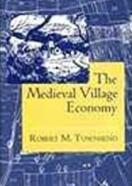In this book, Townsend combines the theory of general economic equilibrium with the notion that allocations and institutions of a given economy might be Pareto optimal to try to explain various salient features of the medieval village economy. The medieval village economy in many ways reflects the economies of poor high-risk agrarian villages of the contemporary world and serves as an ideal testing ground for Townsend's theories. The environment of the medieval village resembles those of relatively simple models with such key elements as uncertainty and private information, and its institutions display distinctive features such as fragmented landholding patterns. In this book standard models of macroeconomics and the literature on contract theory and mechanism design are reinterpreted, applied, and extended. The author draws both descriptive institutional material and particular parameter values from historical observations, and characterizes solutions to the models analytically and numerically. The idea is to see whether the observed outcomes can be explained, shedding light both on the historical material and the models themselves.
The Medieval Village Economy: A Study of the Pareto Mapping in General Equilibrium Models
Princeton University Press
July 1993

Sources
buy